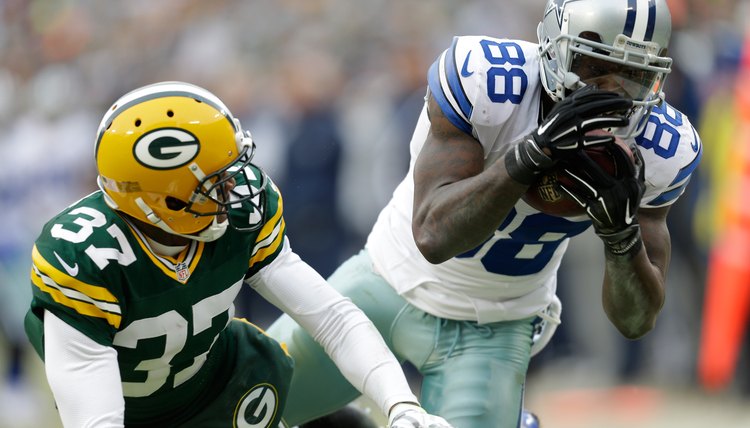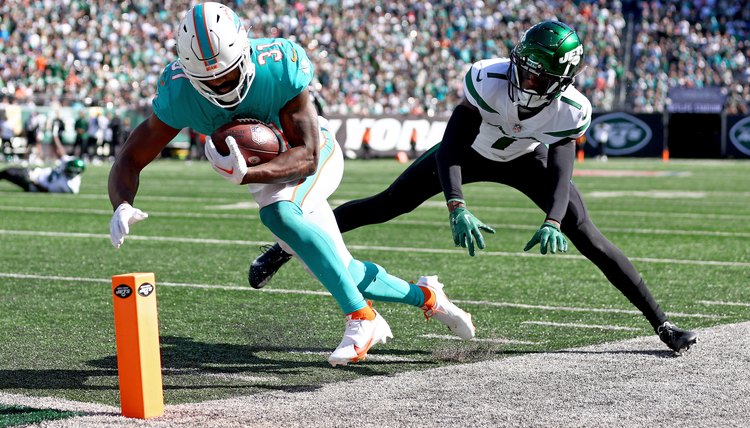What is Illegal Touching in Football? NFL Rules for Out of Bounds

A play that ends up out of bounds in the National Football League can bring up tricky ramifications for the officiating crew. While the rules concerning out of bounds plays are similar in the rule book for professional, college, and high school football, subtle differences exist as well.
NFL catch rules, like illegal touching and pass interference, often undergo changes as situations arise. One example was Dallas Cowboys’ wide receiver Dez Bryant’s critical play near the goal line in the 2015 NFC Divisional-Round playoff matchup against the Green Bay Packers that was ruled an incomplete pass, and another is Pittsburgh Steelers’ tight end Jesse James’ touchdown being reversed by replay officials in New York in a game against the New England Patriots.
Each of these controversial plays led to offseason football rule book changes by Roger Goodell and the 32 NFL owners, who sought to eliminate controversies like that, especially in critical moments.
Receiving a Pass
Many plays in the NFL are made along the sidelines. For a reception (or interception) to be made legally, the receiving player must:
- Catch the ball and come down with both feet or another body part clearly in bounds
- Maintain control of the ball
- Make a football move, such as a third step, while still having clear possession of the ball
If the receiver jumps up for a pass and catches it but comes down with one foot inbounds and then the other foot comes down out of bounds, the pass is ruled incomplete. If a player catches the ball with both feet in bounds, maintains control of the ball, and makes an act common in football, the ball becoming loose before the player goes down is ruled a fumble.
In college and high school football, a receiver only has to get one foot inbounds, but if an NFL receiver gets even a toe on the sideline, the pass is still ruled incomplete. Close catches along the sidelines, especially those close to the end zone that can determine whether a play is a touchdown or not, are often challenged by coaches and reviewed by the replay official and the referee in charge of the game.

Timing
When a play ends with a ball carrier going out of bounds, the clock stops until the referee sets the ball back at the line of scrimmage and deems that play is ready to begin again. However, if a play ends up out of bounds in the last two minutes of the first half or the last five minutes of the second half, the clock stops and does not restart until the ball is snapped on the next play.
Re-entering the Field of Play
According to the NFL rulebook, a player may not run out of bounds and then run back inbounds to make a play. For example, a receiver may not run down the sidelines, step out of bounds and come back in bounds to make a catch.
If a player makes a catch under those circumstances, a penalty flag is thrown for illegal touching. However, if the player is shoved out of bounds by a defensive player and then gets back inbounds as quickly as possible, the illegal touching penalty flag is not thrown, and the catch can be ruled as legal by the officials.
References
Writer Bio
Steve Silverman is an award-winning writer, covering sports since 1980. Silverman authored The Minnesota Vikings: The Good, The Bad and The Ugly and Who's Better, Who's Best in Football -- The Top 60 Players of All-Time, among others, and placed in the Pro Football Writers of America awards three times. Silverman holds a Master of Science in journalism from the Medill School of Journalism.
